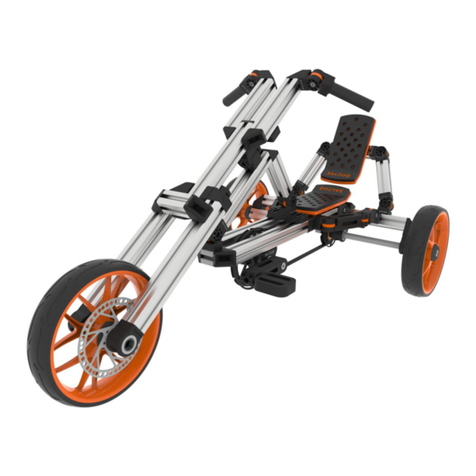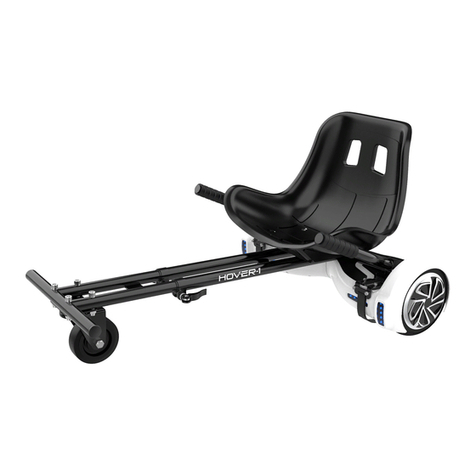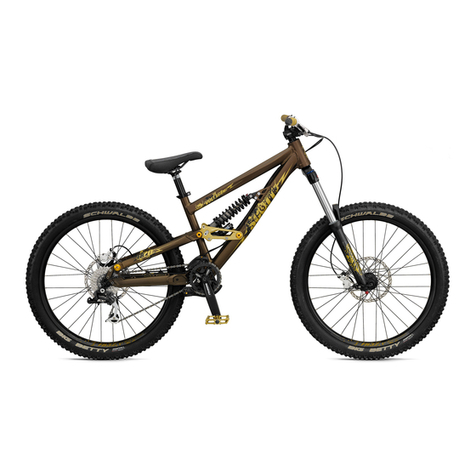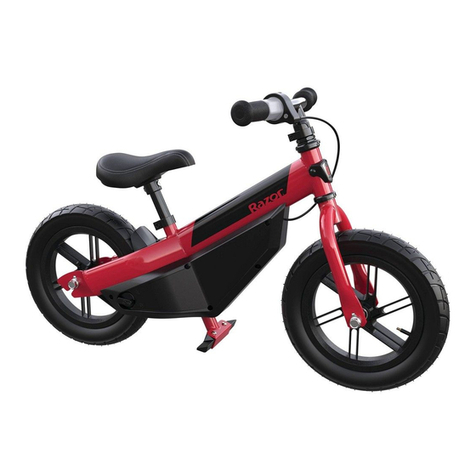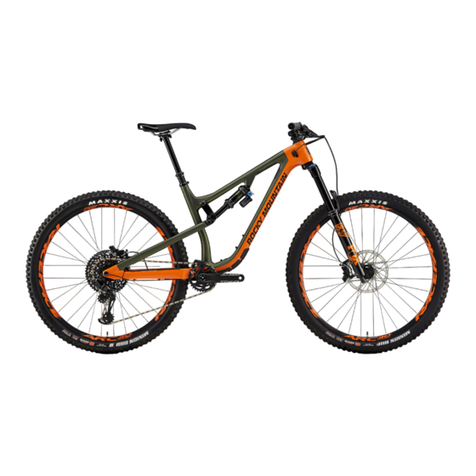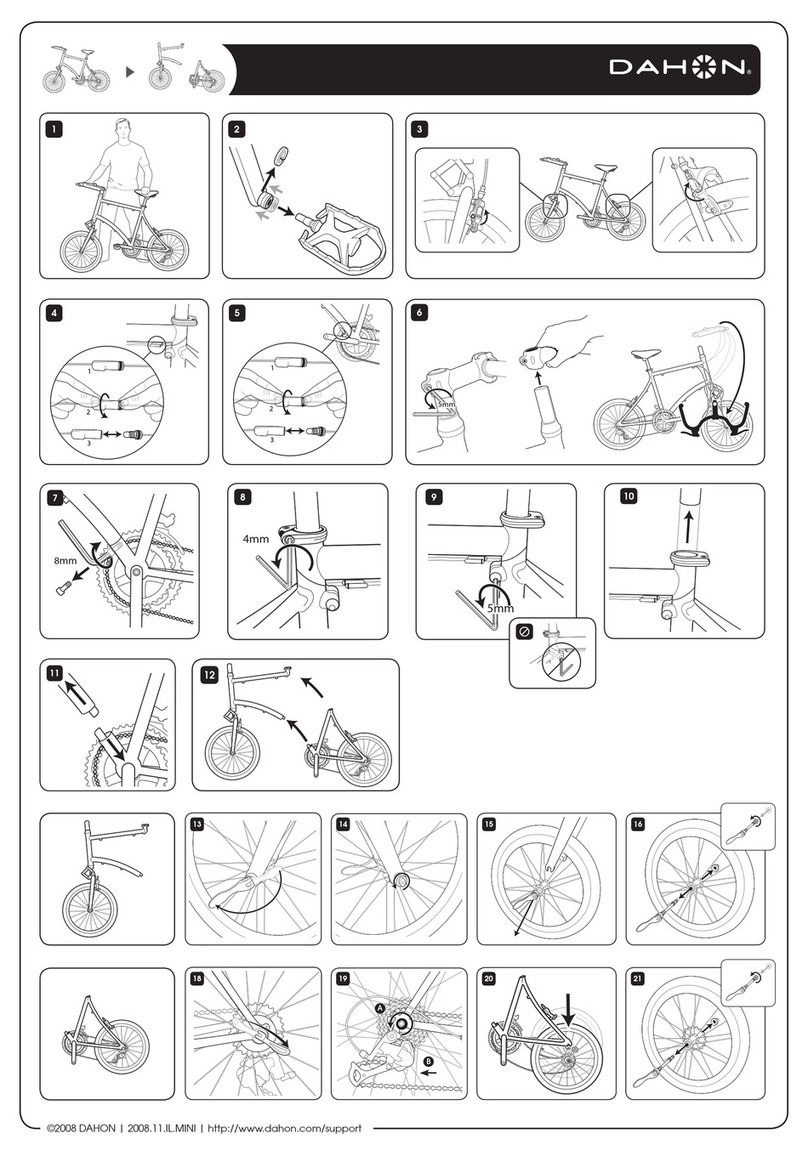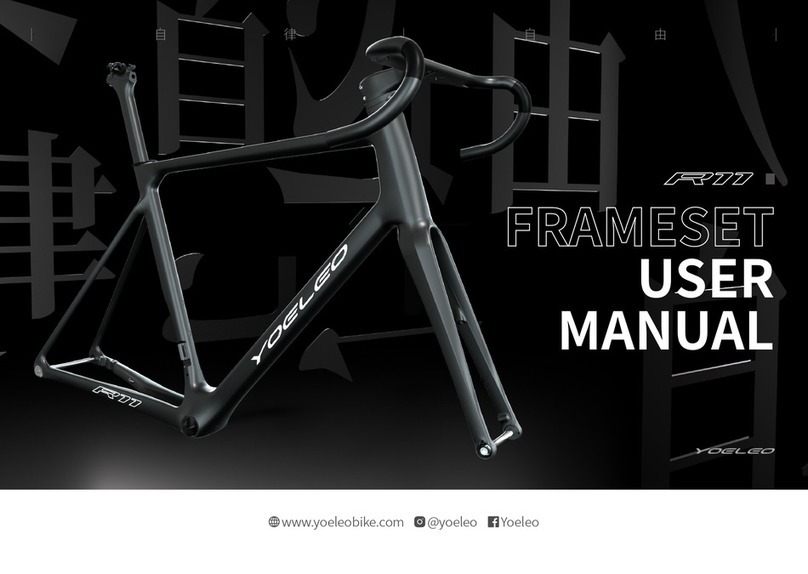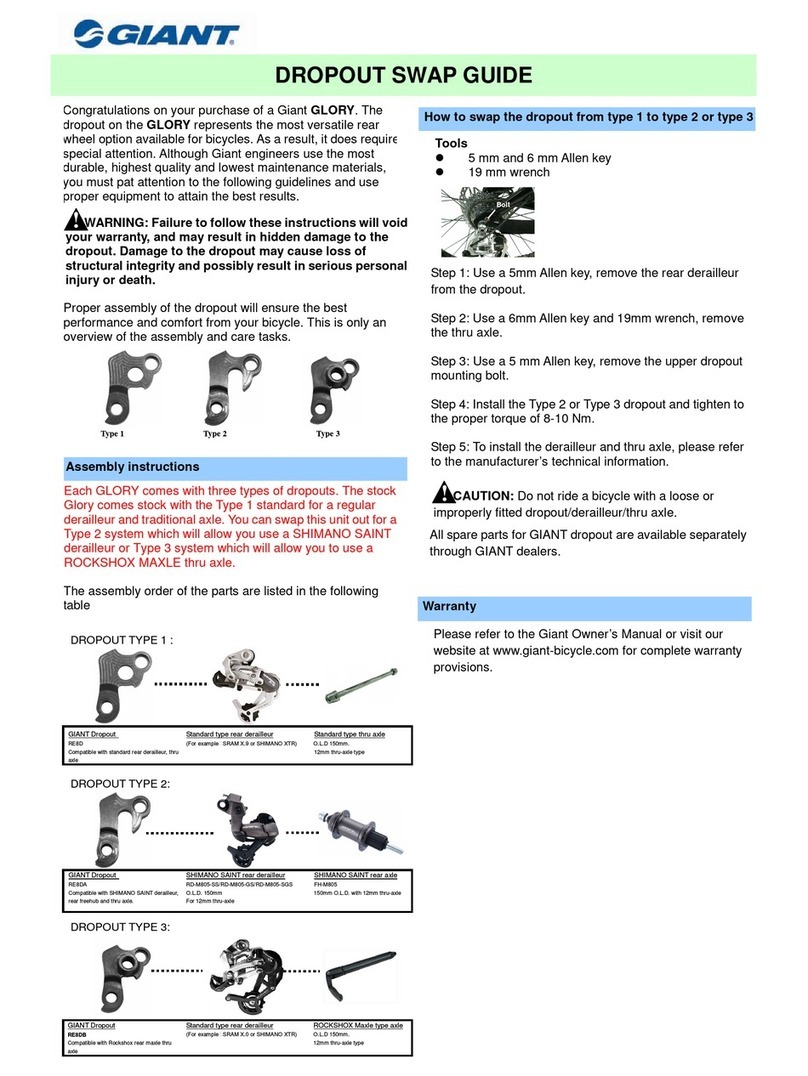Spark Bikes Spark X User manual

"
Page 1
Owners Manual
Spark X#

Contents
Welcome and comments$ $ …………….…………………………………………… 3#
What is in the box$$$…………….…………………………………………… 4#
Handle bar assembly$ $ …………….…………………………………………… 5#
Front light and fender assembly$…………….…………………………………………… 7#
Front wheel assembly$ $ …………….……………………………………………. 9#
Seat and seat post assembly$…………….……………………………………………. 10#
Pedals assembly$$$…………….……………………………………………. 10#
Chain slap guard assembly$…………….……………………………………………. 12#
Battery care and removal$ $ …………….………………………………………….… 13#
Charging your battery$ $ …………….………………………………………….… 14#
LCD display details$$$…………….………………………………………….… 15#
Cleaning and maintaining$ $ …………….………………………………………….… 21#
Warranty$$$$…………….………………………………………….… 22#
Page 2

Congratulations on purchasing Spark Bikes. You have chosen a bike that will give you
a superb riding experience. #
This manual will help you to install and keep your bike at its best shape ensuring that
you will enjoy every ride.
Warning
Before your first use, check that all components are properly installed and properly
functioning. Test ride your bike until you are confident that you are familiar with its power
modes, stopping function, and overall riding process. Neglecting to do so may cause
serious injury.
Spark Bikes recommends that you always wear a helmet for your own safety. Use front
and rear lights after sunset for increased visibility.
For your safety
!
If this is your first time riding an electric bike, it is highly recommended that you ride in
an open area and set your power assist level to low. Once you feel confident operating
your new bike, increase the power assist gradually. If for any reason you lost control,
apply the brake levers immediately to disconnect the motor power and stop the bike. Do
not try to stop your bike using your feet.
!
Caution
The pedal assist sensor is located on the pedal crank. It activates the motor when you
move the pedals and will cause a sudden burst forward. Keeping your hands over the
brake levers is good practice.
It is recommended that you perform regular maintenance and tune-ups to ensure that
your bike always performs well. Seek help of a professional bike mechanic whenever
required."
Page 3

What’s in the box?
•The bike#
•Seat#
•Pedals#
•Charger#
•Chain slap guard #
Use cutting pliers to unpack and cut zip ties"
Page 4

Handle bar assembly:
Required tools:
- 4mm Allen key
Steps:
Unscrew the four bolts from the stem
Page 5

Remove the cap#
Insert the handle bar and place the cap. Screw in the bolts to tighten the cap#
Page 6

Front light and fender assembly
Required tools:#
- Front light: 5mm Allen Key and 10mm open ended wrench
- Fender stays: 4mm Allen Key
Steps:
Place the fender under the fork bracket. The bracket must be between the two hooks.
Insert the bolt into the light through the fork bracket and fender, and tighten using the
Allen key from the front and
the wrench from the back
Page 7

Place the fender stays onto the designated area and tighten using an Allen key
The bolts are provided in a separate bag with the charger
!
!
Front wheel assembly
Required tools:
-15 mm wrench
Page 8

Steps:
!
Remove the bolts and washers from the wheel axle
Insert the wheel into the fork hooks ensuring that the disc brake rotor is inserted into the
break pads
Insert the hook washer and point downward to fit into the fork. Insert the second washer
in and tighten the bolts using the wrench
Page 9

Seat assembly
Steps:
Open the lever,insert the seat post, adjust the height, and close the lever to lock
Rotate the lever to adjust the tightness
To adjust the seat position loose the bolt under the seat using the Allen Key. You can tilt
the seat angle up or down and move back or forward to fit your comfort
Pedals assembly
Required tools:
-15 mm wrench
Page 10

Important
!
The pedals are marked with “L” to indicate left pedal and “R” to indicate right pedal.
Steps:
Insert the right pedal into the right crank, tighten the bolt clockwise using the wrench.
Insert the left pedal into the left crank, tighten the bolt anti clockwise using the wrench
Warning
Inserting the pedals in the wrong position or tightening them while they are not aligned
correctly with the threads, will tear the crank arm threads
Page 11

Chain slap guard:
The chain slap guard is made to protect your frame and chain. It is placed on the chain
stay on the side that has the chain
Page 12

Battery charge
Ensure that your battery is fully charged before your first ride. The charging port is
located on the battery. Lift the rubber seal to charge the battery
Battery care
•Keep the battery indoors during extreme weather
•Avoid storing the battery in high temperature or humid areas
•Remove the battery from the bike when storing for more than two weeks. Ensure the
battery is charged at least 50% prior to storing
•Charge around 70% if you plan to store your battery for few months. The battery will
slowly discharge over time. When the power level goes below 20% charge it up again
around 70%
To clean the battery and the battery housing, use a dry rag, and if necessary slightly
damp rag. Do not spray with water, it may damage the battery or cause a short circuiting
Charge the battery with the supplied charger. Do not attempt to use other chargers as it
may damage the battery or risk a fire or an explosion. Ensure that you charge your
battery on a non-inflammable surface. It is recommended that you charge your battery
in an area with smoke/fire detector in place
Do not charge the battery in a wet and humid place or when exposed to strong sun light
Battery installation and removal
Steps:
Insert the key into the battery keyway, turn the key clock wise, lift the battery lever, and
pull the battery out of its holder
!
Page 13

Charging the battery
Connect the charger to a power socket. On the bottom end of the battery, remove the
rubber lid and insert the charging cable into the charging port. The charger will show a
red light indicating that the battery is being charged. Once fully charged, the light will
turn to green indicating that the battery is fully charged
Page 14

LCD screen
The LCD screen along with the control buttons are place on the handle bar. They are
used to control various aspects including:
1. Battery level
2. Pedal assistance level
3. Measuring speed and distance
4. Switching lights ON / OFF
Switching the power ON / OFF
Short press the power button for one second. The the LCD will switch ON and the bike
is ready start. To switch OFF, short press the power supply for one second
Power assist level
The level of assistance determines the motor’s input while pedalling. There is nine level
of power assist, “1” being the lowest, and 9 being the highest. If you wish to ride with no
power assistance, select “0”. When you switch on the LCD, the bike will be set
automatically to level “1”. You may change the level of assistance by pressing the up/
down button
Page 15

Changing the speed mode
When LCD is switched ON, short press the power button to change the speed mode,
the data sequence is as following:
Average Speed > Max Speed > Actual Speed > Single Trip > ODO >Time
Speed Mode Interface
Page 16

Switching ON/OFF the head and rear lights
To switch ON the head and rear light, short press the up button on the controller for two
seconds. To switch OFF, short press the up button for two seconds.
Battery indicator
The battery on the display has five bars that indicates the battery power
Page 17

Parameter setting
Once the LCD screen is turned on, double press the power button (press interval < 0.3
seconds) to switch to parameter setting. Once you have entered into parameter setting,
press up down to navigate through various settings. To select the parameter you would
like to set, press the power button. To exit the parameter setting, double press the
power button
The display will exit the parameter setting back to the home screen if no action is taken
for 10 seconds
The sequence of the parameter is as following:
- Data clean up
The symbol for data clean up is Cr. Use the up/down button to navigate between “y”
indicating yes you want to clean up the data or “n” indicating that you do not want to
clean up the data. Press the power button to select “y” or “n”.
Page 18

- Kilometer/Mile
The symbol for kilometer/mile is S7, press up/down button to switch between kilometre
or mile and press the power button to choose your preference
- Backlight brightness
The symbol for backlight brightness is bL1, press up/down to select from 1- darkest to
5- brightest. Push the power button to choose your preference
Page 19

- Auto off time
The display switches off automatically when not in use. The symbol for auto off time is
OFF. Press up/down to select from 1 minute to 15 minutes. Press the power button to
choose your preference
All other LCD settings are preset by Spark Bikes to technically match your bike
specifications and to ensure that Spark Bikes complies with local laws. If you require
further information on specific settings, please contact the Spark Bikes!
Error code definition
Whenever a default is detected, the display shows a sign with the error code
placed on the speed display area
Error codes range from 21 to 30 as following:
Page 20
Table of contents
